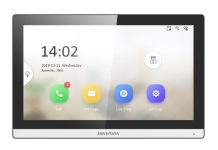
“Security, trust and interoperability are all vital for bolstering the adoption, device sustainability and user experience of IoT!”-said Johnson.
Building management systems (BMS) have evolved in domain silos, each with its proprietary bus protocols and data models. This creates a fundamental interoperability issue between domains and hinders the use of building automation protocols with existing IT infrastructure in our homes and buildings. One example of restrictions caused by a lack of BMS connectivity is the inability to securely use occupancy information (in the security domain) to improve the efficiency of heating, ventilation, and air conditioning (in the HVAC domain).
“OCF has solved this interoperability issue with its Secure IP Device Framework. The framework allows for secure communication between domain silos by enabling a unified IP-connectivity layer on existing and/or new IT infrastructure. OCF’s Secure IP Device Framework is an ISO/IEC adopted standard, internationally agreed upon by experts, and is compliant with all known IoT security requirement baselines. Consequently, data, and even the data models used by BMS, can be securely transported to other devices and the cloud”, explained Johnson.
Why is it important to foster trust, interoperability and secure communication between IP-connected IoT devices and services?
By allowing different devices to communicate seamlessly and securely across ecosystems, frameworks such as OCF’s, IoT interoperability is expected to reach a new level.
Advancing IoT security is also high on many people’s agendas right now considering the increasing mandates centered around data protection, logical access to interfaces, and device security provisions. For example, America’s IoT Cybersecurity Improvement Act of 2020 requires the National Institute of Standards and Technology (NIST) and the Office of Management and Budget (OMB) to take specified steps to increase cybersecurity for IoT devices. This was then echoed by the Biden Executive Order in May 2021.
Over the Atlantic, legislators in Europe are pushing several new and updated requirements in the hope of boosting IoT cybersecurity for devices and service users. This includes cybersecurity updates for the Network and Information Systems (NIS) Directive, the EU Cybersecurity Act, and the Radio Equipment Directive (RED).
OCF’s framework is here to solve this fragmentation, ensuring security (and compliance) by design as it is mapped to key industry and government IoT security baselines, such as the NIST 8529D and ETSI EN 303 645 IoT Baseline Requirements. The framework also addresses some of the most critical failures of the IoT security landscape: application-level security and secure communication over multiple IP segments.
What is the latest technology revolutionizing the smart home sector worldwide?
Many smart home devices to date have been built using proprietary platforms, inhibiting them from connecting with other platforms and limiting truly revolutionary innovation in the sector. To overcome this significant IoT interoperability challenge (while still ensuring security and privacy), the Korea Land and Housing Corporation (LH) recently adopted the OCF secure cloud-connected technology as the foundation for its national Smart Home Platform.
The project is seeing a secure and private-by-design IoT smart hub added to each LH home where it collects and analyzes IoT big data. Residents can control 15 different types of a device via an OCF-compliant Smart Home app which includes features such as built-in fine dust and CO2 sensors.
LH’s smart hub is expected to be rolled out in over 223,000 households by 2025, enhancing residents’ living experiences through access to smart healthcare, intelligent safety systems, greater convenience through automation and improved energy management and control.
How beneficial are IP connectivity networks in Building Automation Systems (BAS)?
IP connectivity networks already exist in our buildings and are managed by IT professionals. Such systems have reached a level of reliability, bandwidth and (low) latency, meaning that they can now be used to carry BAS data. This is massively beneficial as it will cause a dramatic shift in the way that we interact with buildings and open up opportunities for new services and business models.















